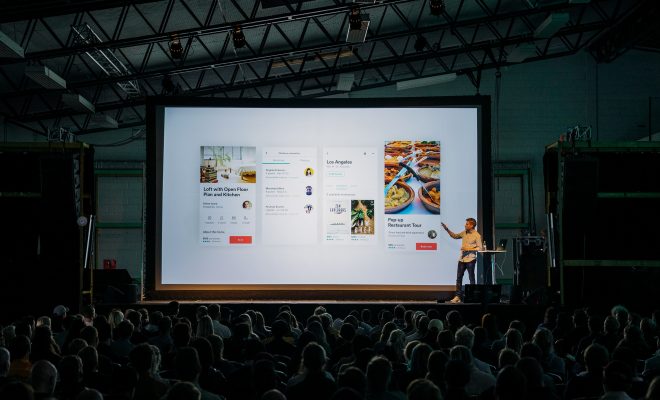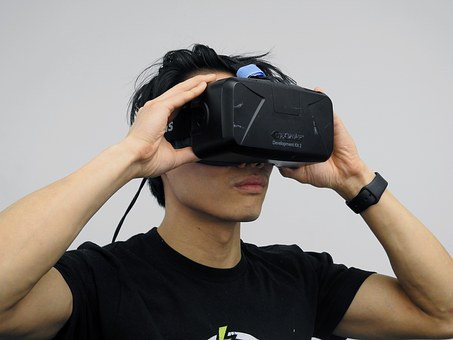Virtual campus: online universities are the future of higher education

This article is written by Dror Ben-Naim
In higher education, we’ve been talking about “e-learning” for years. But, in practice, we have mostly been teaching in the same way just through different mediums; that is, delivering one-way lectures online, posting digital lecture notes and occasionally “innovating” with quizzes.
Instead of students passively learning from a lecturer, imagine immersive online “serious” games where students can learn through practice.
Virtual patients now allow medical students at the University of New South Wales (UNSW) to develop diagnostic and clinical skills through online scenarios. They can learn from their mistakes with no adverse consequences for real life patients and without the need to be at the university.
This is the kind of big leap in higher education that “adaptive e-learning” can provide.
New generation of thinking
It’s funny to think that the same basic idea that lets online gamers score points by shooting weapons in sci-fi worlds is the same that can now help medical students learn how to save real lives online.
Many of the next generation of our graduates will have honed their skills in simulated learning environments – in much the same way that pilots train on simulators before they fly.
New technology is enabling students to learn in an interactive way, which will leave the YouTube clips and web course papers of today’s online education light years behind.
Rapidly evolving online technologies, ubiquitous connectivity and powerful mobile devices mean educators all over the world are now scrambling to understand the profound “disruption” web-based mass online learning is ushering in.
And Australian universities are no exception. At UNSW, we’re starting to use an “Adaptive e-Learning Platform” – which allows students to learn exactly the same things they did in a conventional laboratory, but more conveniently and cheaply. Teachers can now create their own lessons in interactive virtual worlds with different online scenarios.
Recently, we secured investment and spun out a start-up company – Smart Sparrow – to take our ideas from the lab and into the market, and to take our virtual learning worlds beyond UNSW. New government funding will enable health educators across NSW to access Smart Sparrow’s virtual patient technology.
Learning by doing
From a pedagogical perspective, this means more effective learning. We have long known that hands-on learning by doing, rather than learning by passively listening or watching, is the key to retaining knowledge and applying it successfully.
Trials of Smart Sparrow using a virtual patient to train nurses in the use of defibrillators in an American hospital, for example, achieved an improvement in task completion times from 1.4 minutes to 1.2 minutes, where patients died at 1.3 minutes.
In teaching microscopy techniques through this method, students showed a 56% improvement on standard exam scores. More than 90% of the 10,000 students we surveyed “agreed” or “strongly agreed” that they would like to use similar adaptive lessons in other subjects.

A screenshot of the virtual patient program. Author
It also means the ability to share teaching resources with anyone who has an internet connection and to deliver sophisticated training and learning modules remotely.
For those of us interested in constantly improving learning outcomes adaptive e-learning technology has a lot to offer.
Students get instant, personalised feedback as they progress, so they never hit a dead end and walk away.
If students have difficulty with a particular concept, the system can take action; it can recommend a piece of suitable content, offer feedback or redirect them to different part of the activity.
But, the most interesting aspect of adaptive e-learning is that teachers can, for the first time, see exactly how students are approaching problems and identify knowledge gaps to fill. Special analytics tools plough though the massive amounts of data collected from students working in virtual worlds and turn it into information for teachers about how their students are learning.
Disruptive innovation
Hopefully, Australian universities deal with the “disruptive innovation” that comes with these technological advances by recognising their potential to improve the way we teach and learn.
But the higher education sector has a lot on its plate. Not only is digital technology giving us rich, interactive learning environments, but the internet is radically shaking up the “reach” – and business models – of educators all of the world. New players delivering courses online, often for free, have the potential to reach tens of millions of students.
Big, prestigious education brands, like Harvard and MIT, have recently announced their free Massively Open Online Courses (MOOCs), enrolling tens of millions of people.
In many ways, traditional universities as we know them, the bricks and mortar “factories of learning” designed to meet the education and skills needs of the industrial revolution, are already outdated. As the print industry has so painfully learned, online means of delivering “content” are efficient, interactive, engaging, instant and infinitely cheaper.
Online education will similarly challenge traditional on-campus education, both through the capacity to deliver entire courses or units remotely and by transforming – and improving – what we are doing face to face in classrooms and labs.
The next step
So far, online education has struggled to “personalise” learning: to provide feedback that makes sense to individual students, and to adapt the learning path by recognising the differences between individuals. Many of us have rejected online altogether, perceiving it as alienating and impersonal.
But, adaptive e-learning goes a long way to solving that.
Universities have decades, if not centuries, of teaching excellence behind them – that’s an extraordinary asset they need to harness with new technology.
The future of today’s universities probably lies between the “massification” of online education – in which thousands or millions more students can learn the basic and common courses on an online adaptive system – and small tutorial sessions, utilising the benefits of face to face teaching.
From such “disruption” the best education will emerge if we manage to marry the interactive, intelligent and immersive possibilities of virtual worlds and instant digital communications tools with the talents and passion of great teachers.
Dr Dror Ben-Naim is a keynote speaker at the Adaptive eLearning Forum, July 13 – an event hosted by UNSW to discuss the rapid developments in online higher education.
![]()
Dror Ben-Naim, Adjunct lecturer, School of Computer Science and Engineering, UNSW Australia
This article was originally published on The Conversation. Read the original article.






